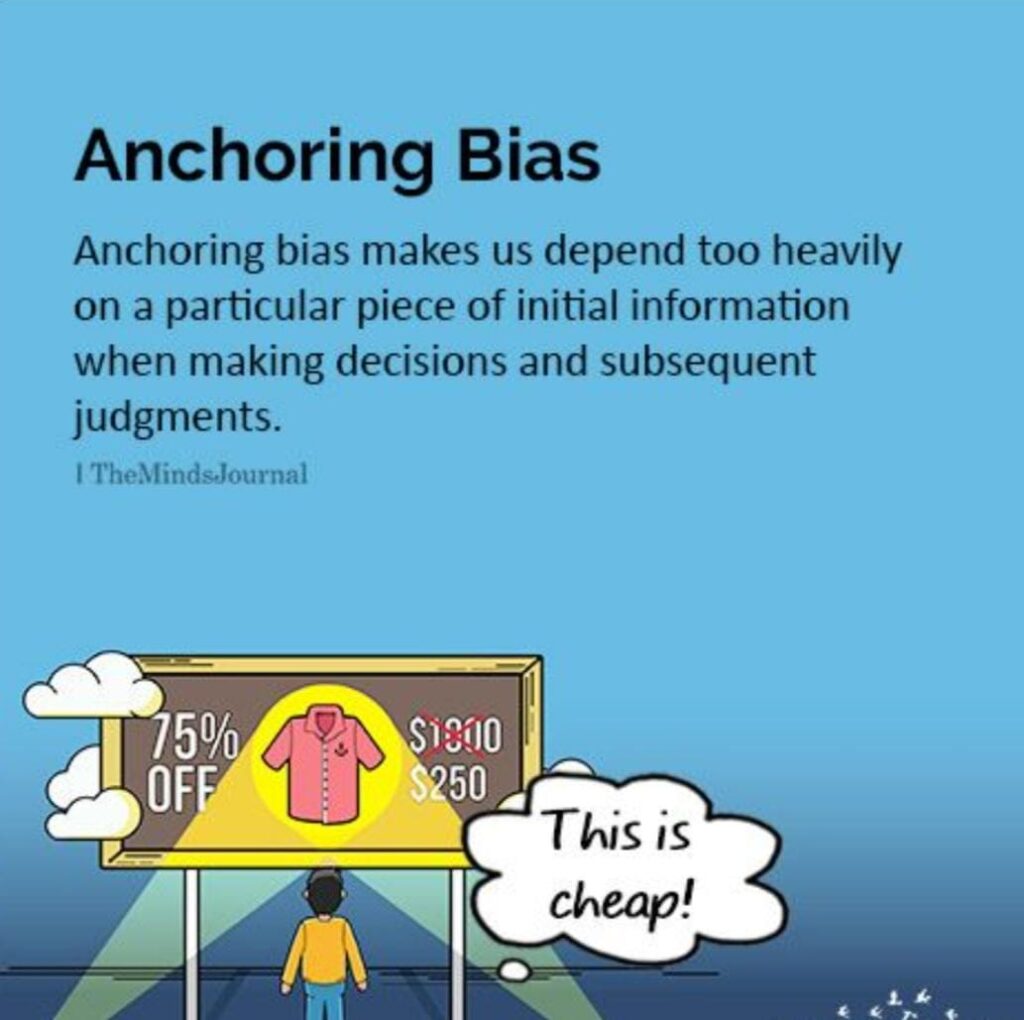28th February, 2023
The Mongols ruled most of central Asia before their leader, Chenghis Khan, led them on an ill-fated campaign into what is now Hungary, where he eventually died.
Two questions:
Did these events happen before or after 151 A.D.?
In what year did Genghis Kahn die?
Before reading this question I had no idea what the actual year was. Assuming you were in the same boat as me, you likely guessed a number not too far from 151 A.D., even though that number was pulled from thin air.
Psychologist J. Edward Russo performed a similar test of 500 graduate students but instead asked them to use 400 plus the final three digits of their phone number as the year before guessing.
When that number fell within the range of 400-599, the average guess was that Kahn died in 629 A.D. But when the range of the first number was 1,200 to 1,399, the average guess was 988 A.D.
We unconsciously anchor to the original number we’re presented, even if it’s meaningless.
The same thing happens when you see the asking price for a house that’s for sale.
When people move to a new city they use real estate prices from their previous city for comparison purposes. A study of people moving to new cities found those relocating from expensive cities rented more costly apartments than those who arrived from lower cost of living areas, and this relationship held after accounting for wealth, taxes and such. Even moving to a lower cost of living area, people used to paying a lot for housing continued to do so.
A grocery store put an item on sale for 10% off. Some days they would put up a sign that read ‘limit 12 per person.’ Other days there was no limit. On days when the item had a limit, people bought an average of 7 units, twice as many as the average on the no-limit days.
If we’re given a number, whether it’s made up, a baseline, a limit or a floor it’s almost impossible for our brains to avoid using that number as a starting point.
Anchoring bias occurs when people rely too much on pre-existing information or the first information they find when making decisions.
Often seen in investing, we set the anchor at the highest price of a stock. After a correction, it appears cheap, even though the underlying value may be far lesser.
We also see this use of Anchoring Bias in areas of advertising, marketing or negotiations.
For example, in a negotiation, the first number offered becomes the anchor.
Knowing this, a salesperson might deliberately set the anchor too high (as in the price of a car) so that any future decrease in price will seem like a discount.
Chenghis Khan actually died in 1227.
To make optimal decisions,
Be aware of this cognitive bias while making decisions & stay blessed forever.

